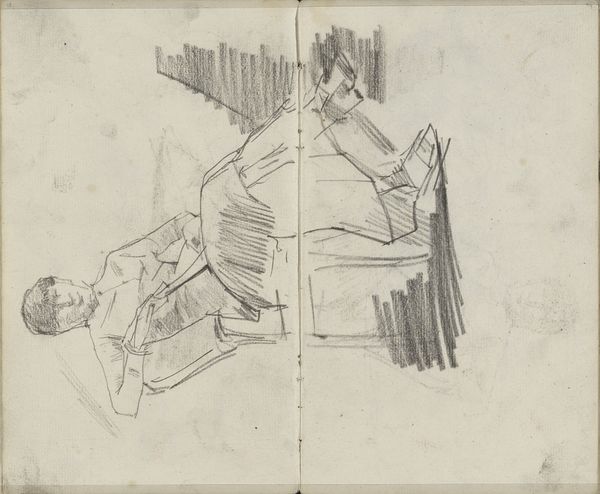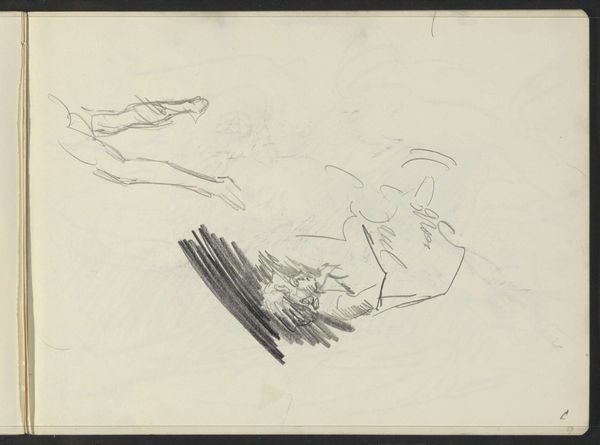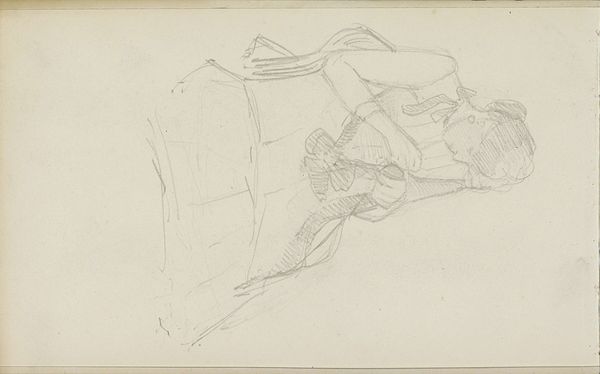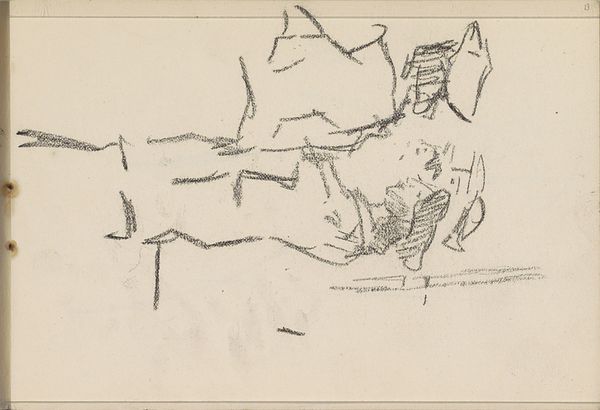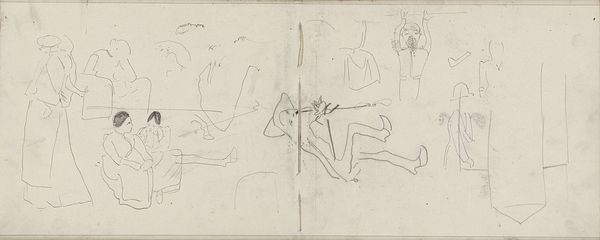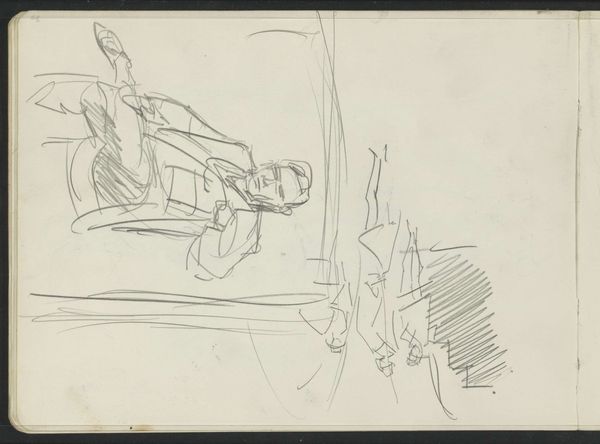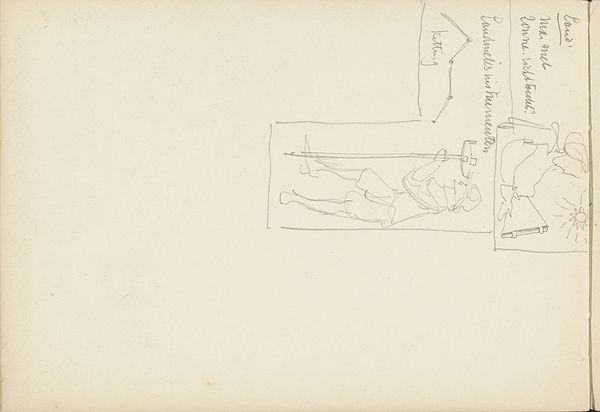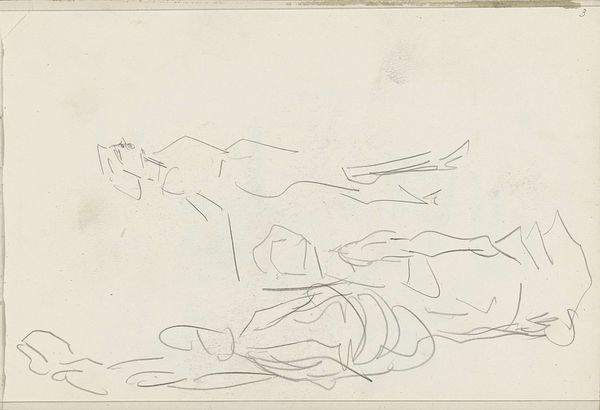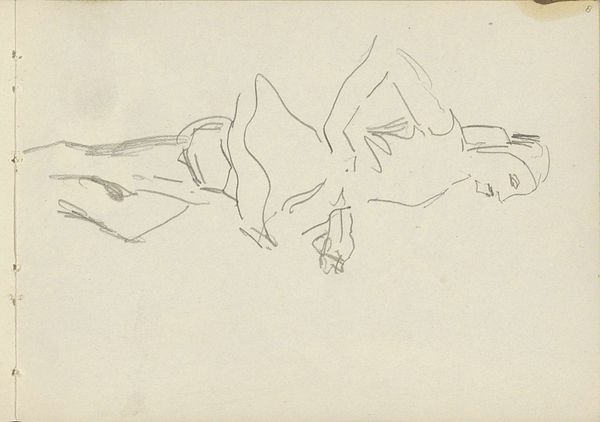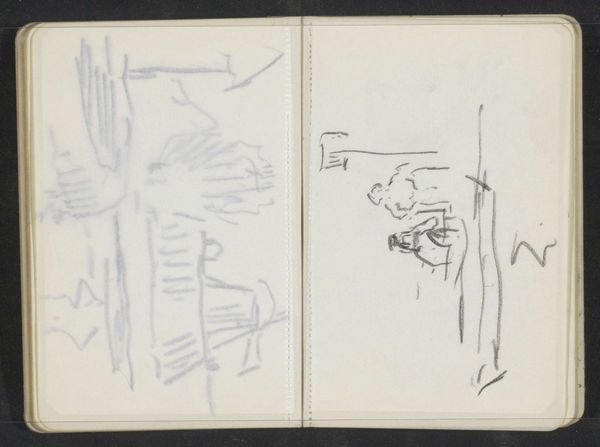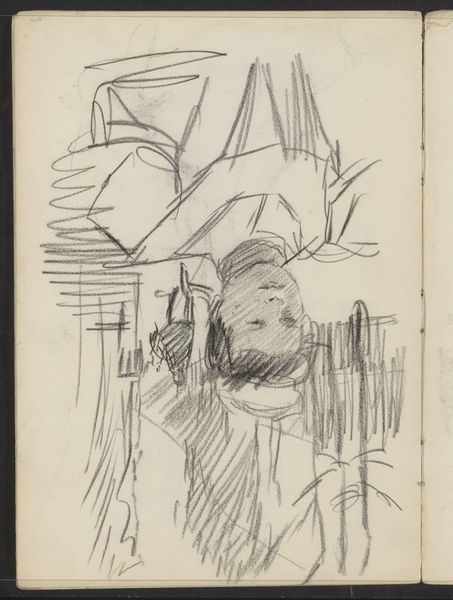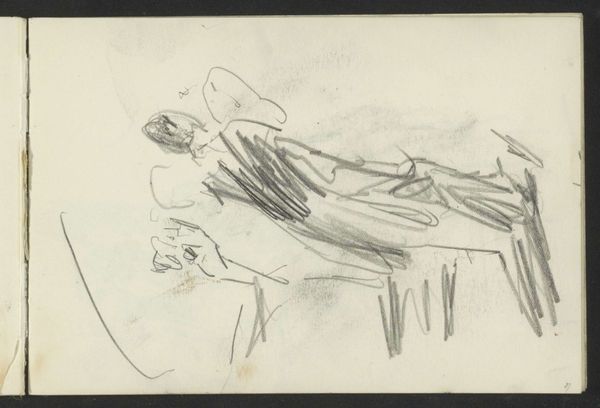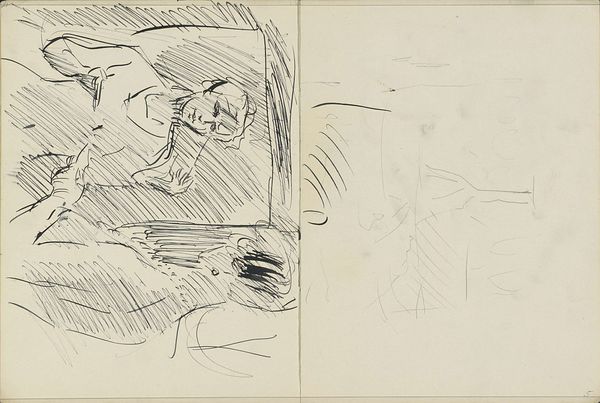
Copyright: Rijks Museum: Open Domain
Editor: This drawing, "Liggende man op de grond," by Isaac Israels, made between 1921 and 1922, is a pencil work on paper. The sketch-like quality gives it an intimate, almost voyeuristic feel, like we're peering into the artist's private sketchbook. What compositional elements stand out to you? Curator: Certainly. Observe the bipartite division of the sheet, each plane hosting distinct vignettes. On the left, the clearly defined reclining figure anchors the composition through rigorous cross-hatching, while geometric parallels create further grounding, suggesting perspective or, rather, its manipulation. How would you say this structural approach influences your understanding? Editor: It makes the figure seem deliberately placed, part of a calculated arrangement, not just a fleeting observation. And the contrasting lightness on the right panel creates tension... but of what sort? Curator: Precisely. It suggests a formal counterbalance and, arguably, enhances the figure's isolation. Note also the interplay of line—the figure's contour versus the abstract strokes above. Do you find the interplay creates meaning beyond its mere representational function? Editor: Yes, now that you mention it! The figure, however rudimentary, conveys a sense of weight and volume because of the controlled pencil shading, unlike the other shapes on the page. Thank you for this structural breakdown, I didn't expect such rigor in a sketch! Curator: My pleasure. This approach allows us to discern Israels' intellectual investment in image making beyond capturing ephemeral reality. The sketch becomes a formal study.
Comments
No comments
Be the first to comment and join the conversation on the ultimate creative platform.
